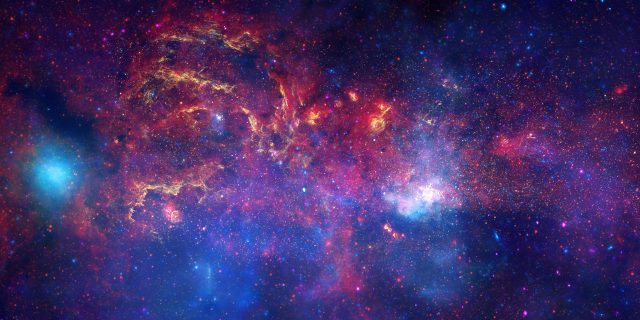How did life begin? It’s Chemistry 101, but in space
Ars Technica 2018-02-26

Star-forming region near the center of the Milky Way. Composite image, assembled from infrared images taken by the Hubble Space Telescope, the Spitzer Space Telescope, and the Chandra X-Ray Observatory in 2009. (credit: NASA & ESA)
How did life start? There may not be a bigger question. To learn the secret of our origins means going back beyond the earliest forms of biological life, past simple bacteria, and down to the chemistry of the building blocks that came earlier.
Most people have heard DNA’s double helix described as the blueprint for life, but its single-stranded relative RNA is also critical for transmitting genetic information. Both are present in the cells of all living organisms, and many scientists suspect that RNA was the original genetic material, coming on the scene before DNA, more than four billion years ago during a period scientists call “RNA world.”
But to build the RNA world, RNA and other biomolecules had to come together in the first place. Their constituent parts have a distinctive chemical property called chirality that’s related to how their atoms are arranged. And a debate has broken out about how life’s chirality got started: is it the product of the chemical environment of the early Earth, or did life inherit its chirality from space?